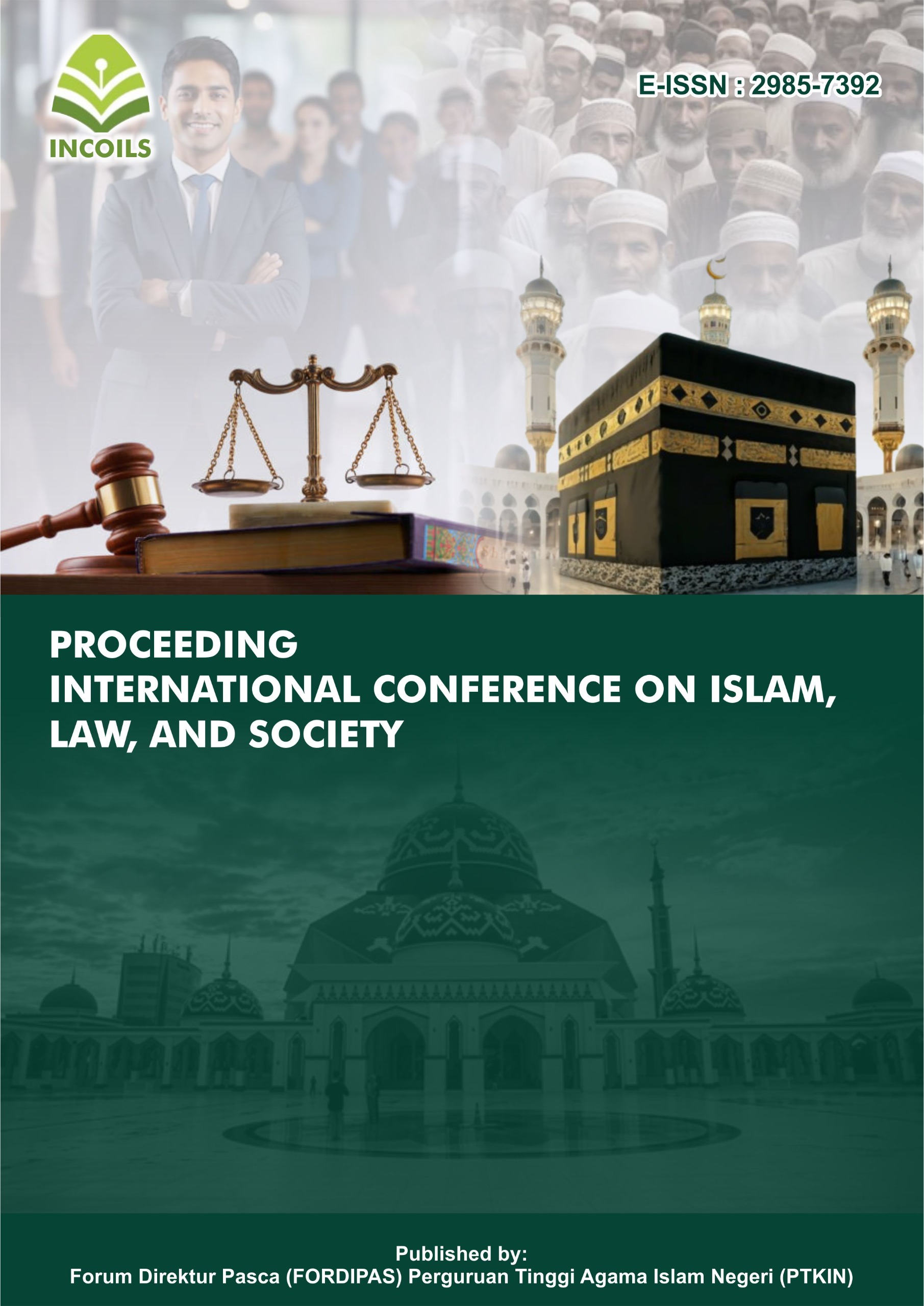Analysis of the Implementation of the All One System Curriculum and Correlated Curriculum in the Organization of the Islamic Religious Education Curriculum at SDIT Nurul Islam Pare
DOI:
https://doi.org/10.70062/incoils.v3i1.180Keywords:
Curriculum organization, Islamic religious education, PAIAbstract
The development of science in the era of globalization has had a major impact on the world of education in Indonesia. Globalization not only has a positive impact, but also has a negative impact on the nation's generation. One example of the negative impact of globalization is the degradation of character and morals. This moral degradation is also found among students today. This is of course the main focus of Indonesian education at the moment, where Indonesian education not only produces a generation that is intelligent but also has moral character and noble character. The current moral collapse of students makes the responsibility for Islamic religious education even higher. Therefore, Islamic education should be provided and applied to every aspect of learning activities or processes. Of course, the implementation of Islamic religious education in all these aspects must be well planned and organized in a school's curriculum. This research focuses on how the implementation of the Islamic religious education curriculum organization model occurs at SDIT Nurul Iman Pare. This research includes qualitative research using a descriptive approach. Data collection in this research uses interview techniques which will later be analyzed using interactive analysis according to Miles and Huberman. The results of this research explain that SDIT Nurul Islam Pare has organized the PAI curriculum well. This can be seen through the combination of two curriculum organization models, namely All in One System Curriculum and Correlated Curriculum. The aim of combining the two models is to make it easier for students to achieve learning goals. The implementation of these two models certainly requires good collaboration between teachers.
References
Alwani, Rasyid, and Nailurrohmah Khoiri. “Model Organisasi Dan Desain Kurikulum PAI Si Indonesia.” Jurnal Ilmu Pendidikan 05, no. 05 (2023): 1928.
———. “Model Organisasi Dan Desan Kurikulum PAI Di Indonesia.” Jurnal Ilmu Pendidikan 05, no. 05 (2023): 1930.
Aprilia, Wahyu. “Organisasi Dan Desain Pengembangan Kurikulum.” Islamika : Jurnal Keislaman Dan Ilmu Pendidikan 02, no. 02 (2020): 221.
Arief, Yoespie Amirullah, and Hamami Tasman. “Organization Anda Design of Development of Islamic Religious Education in Indonesia.” Jurnal At-Ta’dib 15, no. 01 (2020): 20.
Dayusman, Edo Alvizar. “Pola Modern Organisasi Kurikulum Pendidikan Agama Islam.” Jurnal Idarah Tarbawiyah 04, no. 02 (2023): 126–27.
Fitri, Agus Zaenul, and Nik Haryanti. Metodologi Penelitian Pendidikan. Malang: Madani Media, 2020.
Rofyatun, and Afifurahman. “Organisasi Dan Struktur Kurikulum Pendidikan Islam.” Jurnal Ta’limuna 09, no. 03 (2019): 29.
Sugiana, Aset. “Proses Pengembangan Organisasi Kurikulum Di Indonesia.” El-Hikmah : Jurnal Kajian Dan Penelitian Pendidikan Islam 12, no. 1 (2018): 91.
Sukiman. Pengembangan Kurikulum : Teori Dan Praktik Pada Perguruan. Yogyakarta: Fakultas Ilmu Tarbiyah dan Keguruan UIN Sunan Kalijaga, 2013.
Supriadi. “Pengorganisasian Kurikulum Pendidikan Agama Islam Dan Budi Pekerti SMA Negeri 8 Bermuatan Keilmuan Integrasi Interkoneksi.” Jurnal Liaison Academia and Society 01, no. 01 (2022): 331.
Utomo, Ghamal Sholeh, and Tasman Hamami. “Organisasi Dan Desain Kurikulum PAI.” Jurnal At-Takfir 02, no. 02 (2020): 146–49.
Utomo, Sandi Aji Wahyu, and Wida Nurul Azizah. “Analisis Organisasi Kurikulum Anak Usia Kelas Awal Sekolah Dasar (SD) Atau Madrasah Ibtidaiyah (MI).” Jurnal Pancar 02, no. 01 (2018): 20.
Downloads
Published
How to Cite
Issue
Section
License

This work is licensed under a Creative Commons Attribution-ShareAlike 4.0 International License.







